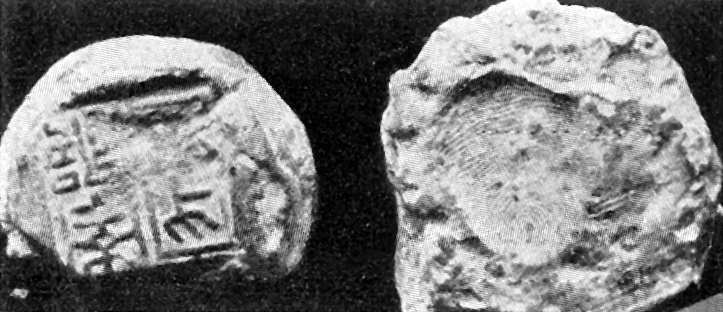The popular TV series "CSI" may be fiction but real-life crime scene investigators and forensic scientists have been collecting and analyze evidence to determine what happened at crime scenes almost as long as there have been crime scenes.
There is evidence during the Qin dynasty that the Chinese used handprints as evidence in crimes as far back as 2,200 years ago and by the 1860s the process for lifting fingerprints from evidence was developed. As guns became more common, gunpowder residue became a way to know if a weapon was fired.
When someone fires a gun, burnt particles from the bullet spray out of the weapon onto a shooter's hand, clothes, furniture and other surfaces nearby. The presence or absence of that residue says whether a gun was discharged and — based on its location on clothing and other surfaces — who and what was near the weapon when it was fired.

Ancient Qin dynasty palm print. They also used hands as identifiers in crime. Credit: onin.com
But despite what we read or see in fictional accounts, current gunpowder residue analysis methods can only re-create a crime scene story in hazy detail. The most widely used technique today specializes in detecting the heavy metals that some ammunition contains. Yet newer bullets aren't necessarily made with heavy metals, making analyses much more difficult.
Existing methods also require expensive equipment and a lot of time and law enforcement investigators know that after the first 48 hours, crimes stand less chance of being solved.

Credit:
DOI: 10.1021/ac4036718
To bring real-life CSI closer to what's hyped on TV, a team writing in Analytical Chemistry
set out to find a new way to trace the ammunition used in a crime. They have developed a more rapid and accurate method that could allow crime scene investigators to tell what kind of ammunition was shot from a gun based on the residue it left behind.
They developed a novel approach to improve gunshot residue "fingerprinting" that can rapidly detect a wider range of particles than existing methods. "Therefore the ability to detect these chemicals may indicate that a specific ammunition brand was discharged (or was not) during a shooting incident," the researchers state..






Comments